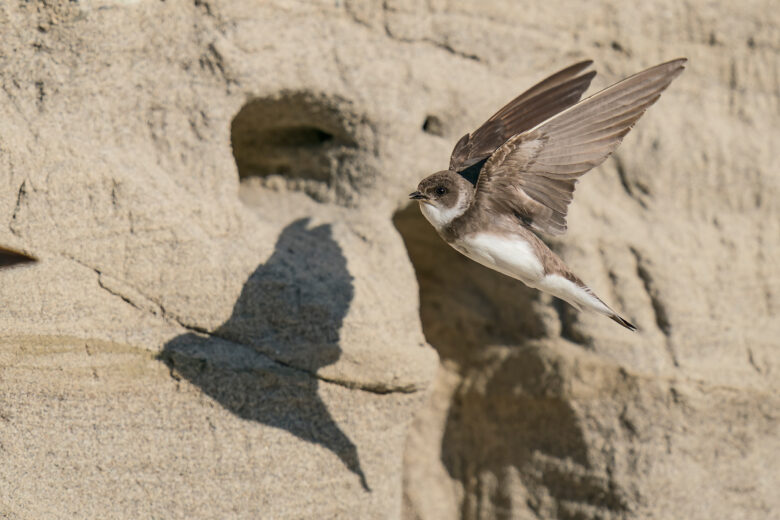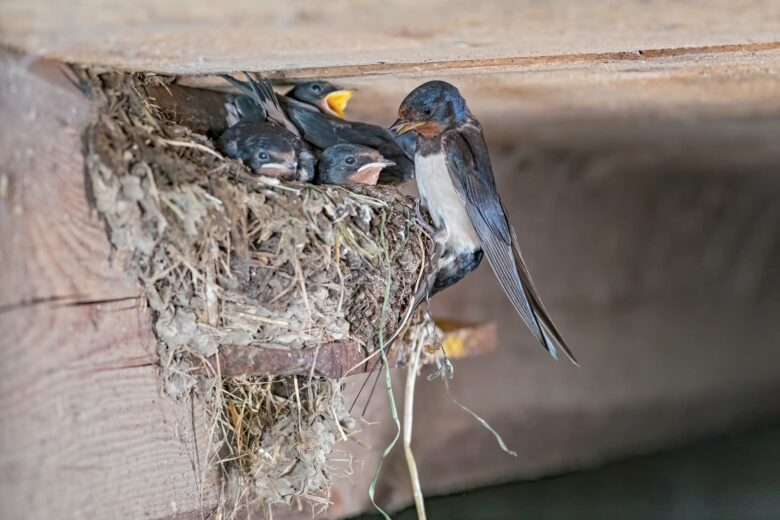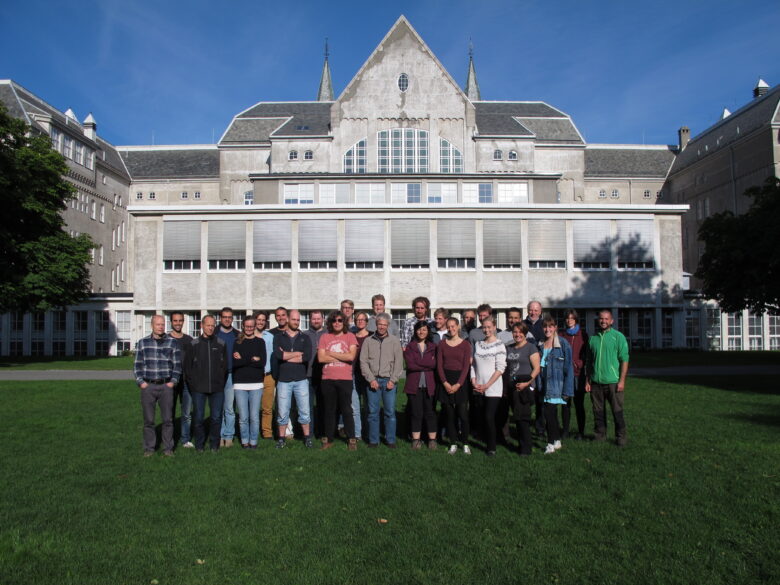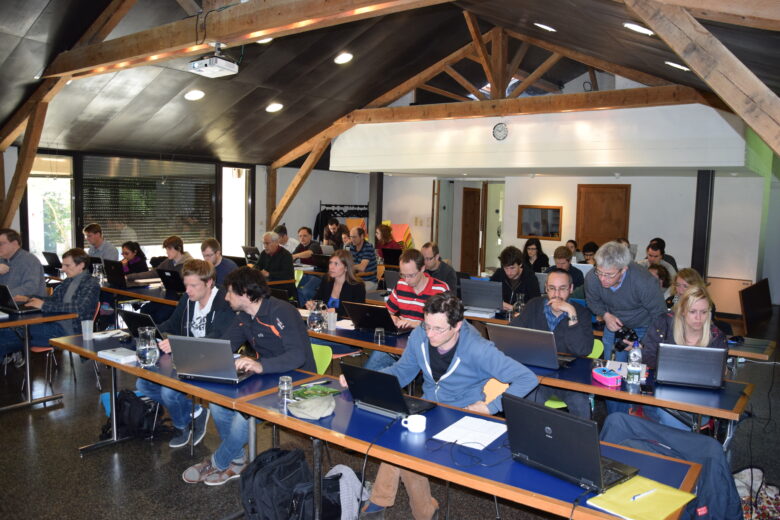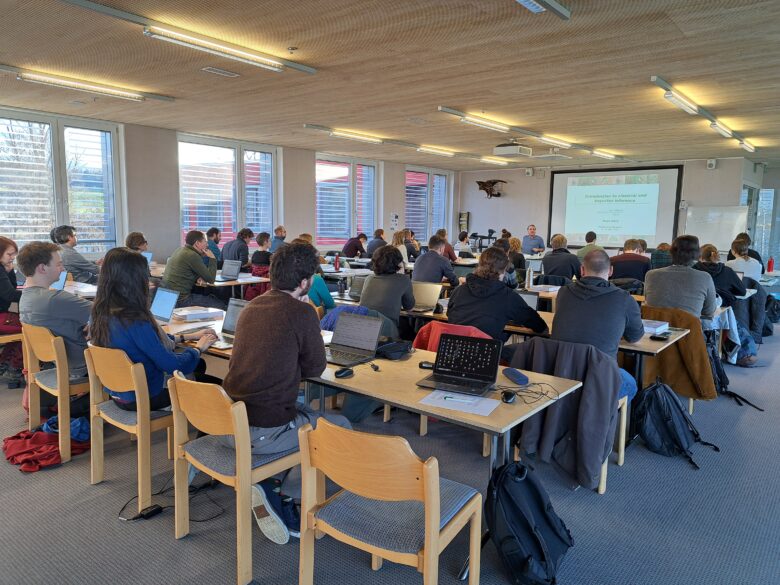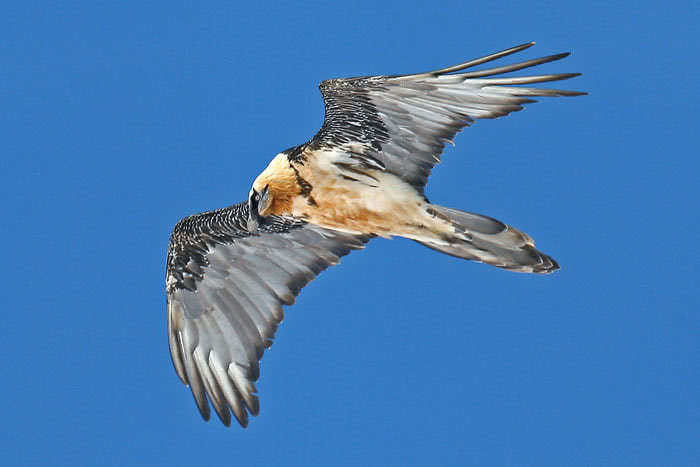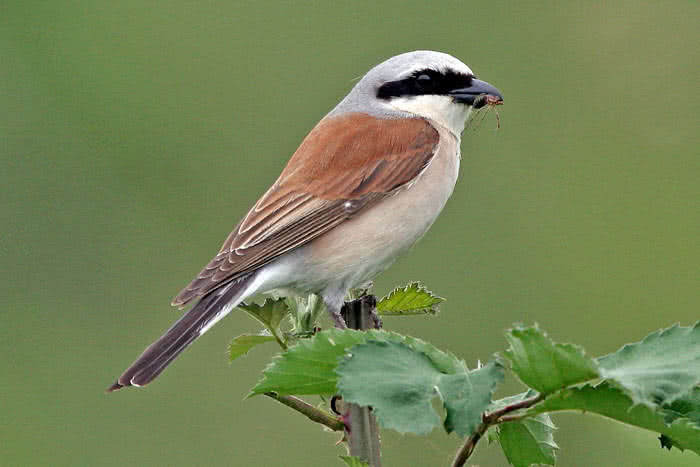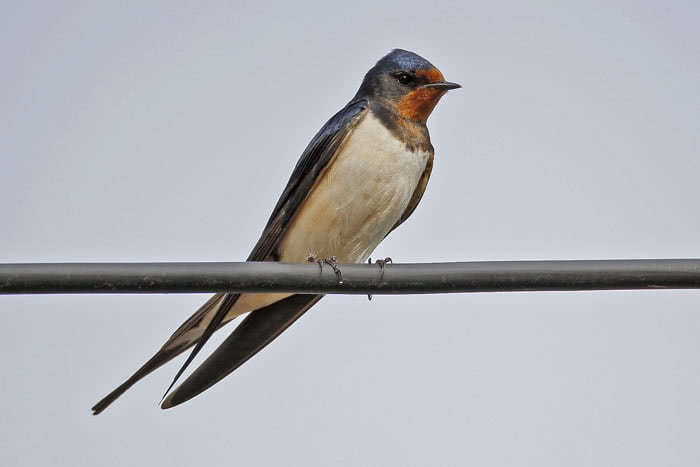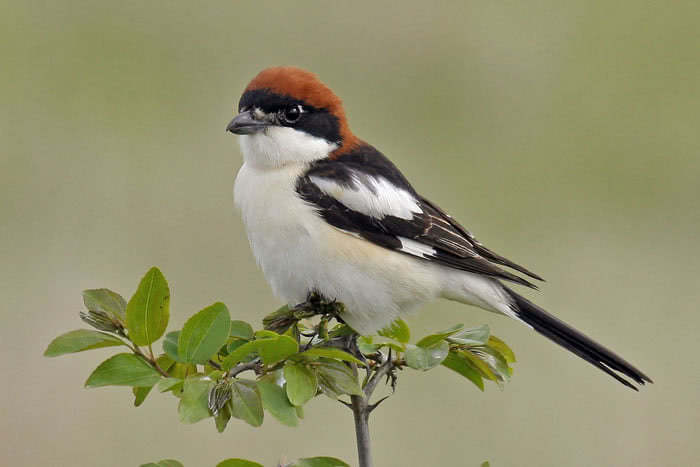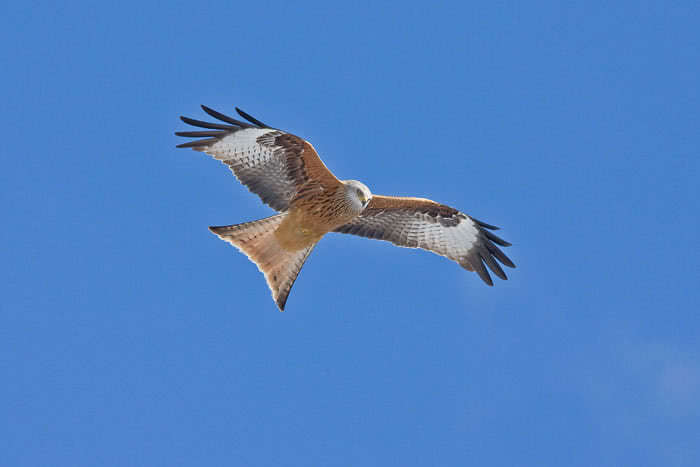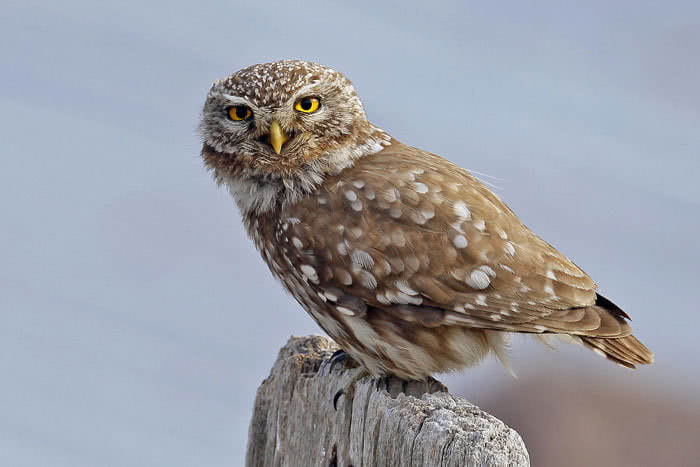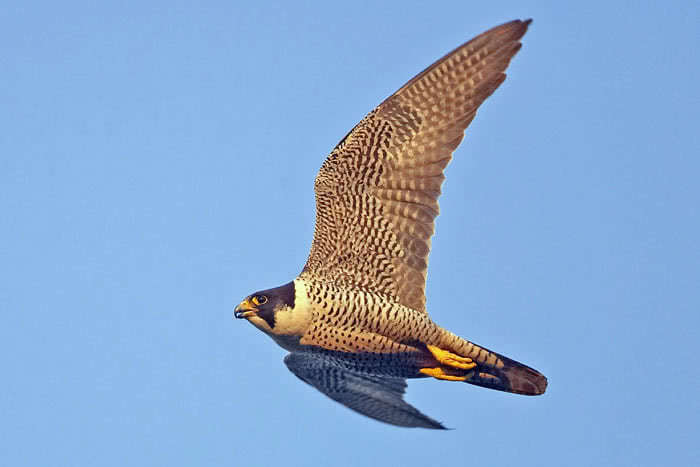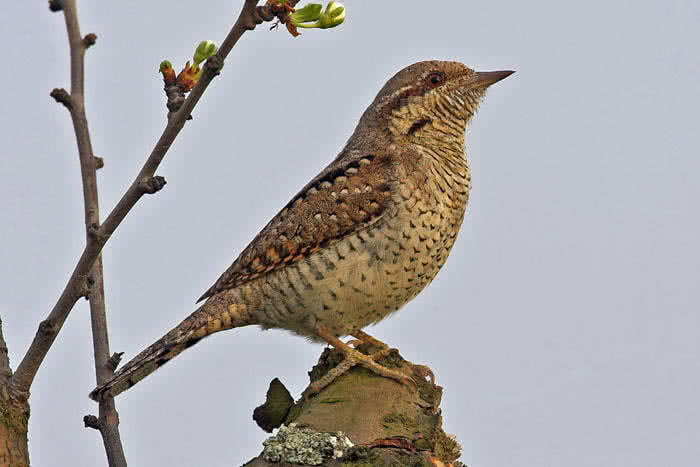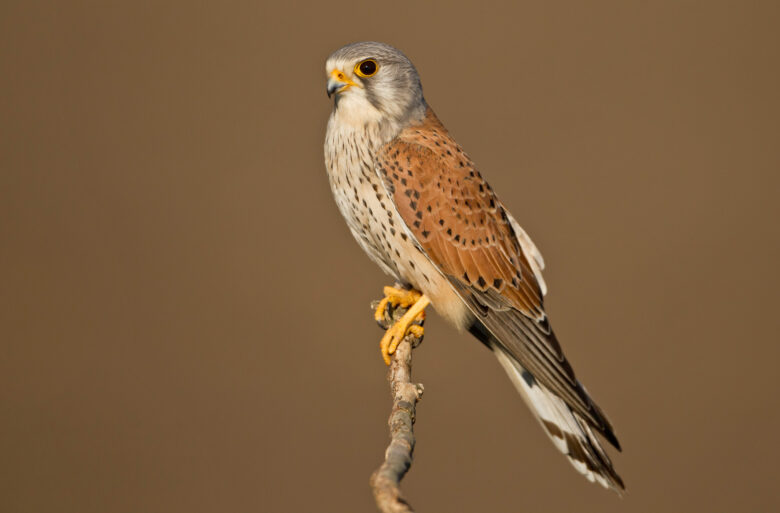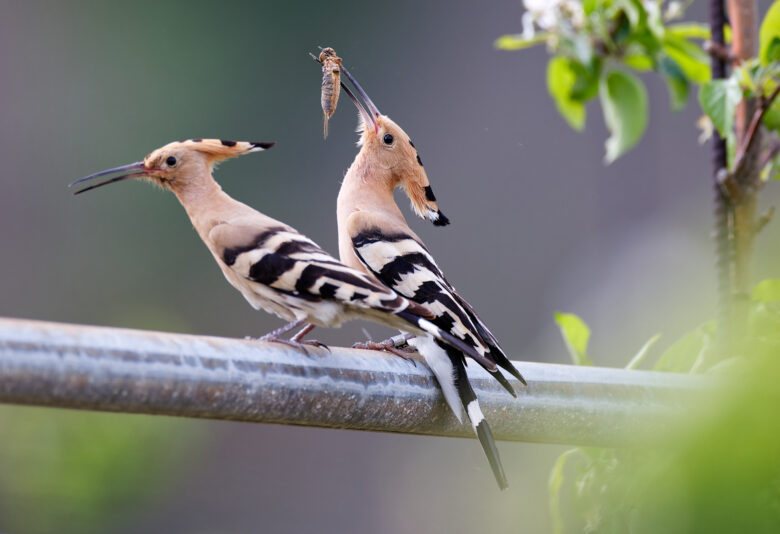Les tendances démographiques dépendent du nombre d’individus survivants, du nombre de naissances, d’immigrations et d’émigrations. Les modèles de population intégrés analysent conjointement plusieurs types de données (p. ex. les décomptes de population, les données de capture-recapture ou relatives au succès de reproduction). Il en résulte des estimations plus précises des processus démographiques et une meilleure compréhension des causes des fluctuations des effectifs. Le développement de tels modèles présente un intérêt fondamental à l’intersection entre l’écologie des populations et la statistique. Il est primordial pour diagnostiquer les causes du déclin des espèces rares.

©
© Rudolf Aeschlimann
Pie-grièche à tête rousse

©
© Marcel Burkhardt
Hirondelle de rivage

©
© Marcel Burkhardt
Hirondelle rustique

©
© Marc Kéry
Atelier à l’Université de Trondheim en Norvège, 2017

©
© Marc Kéry
Atelier à la Tour du Valat en Camargue, France, 2015

©
© Michael Schaub
Atelier dans le Patuxent Wildlife Research Center, États-Unis, 2016

©
© Michael Schaub
Atelier à la Station ornithologique suisse, Sempach, 2023
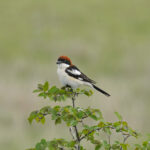


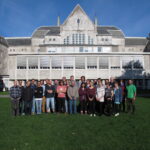
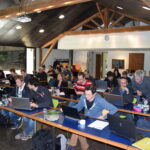
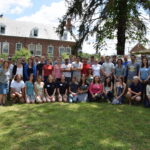

Pie-grièche à tête rousse
Hirondelle de rivage
Hirondelle rustique
Atelier à l’Université de Trondheim en Norvège, 2017
Atelier à la Tour du Valat en Camargue, France, 2015
Atelier dans le Patuxent Wildlife Research Center, États-Unis, 2016
Atelier à la Station ornithologique suisse, Sempach, 2023







Modèles de population intégrés (IPM)
Le développement de nouveaux modèles statistiques permet d’étudier la démographie et la dynamique des populations d’oiseaux, et de comprendre les causes de leurs fluctuations.
Domaine
Recherche
Unité
Biologie des populations
Sujet
Ecologie, Evolution des effectifs
Habitat
montagne, zone agricole, forêt, prairies et pâturages, cours d'eau, terrain rocheux, surfaces agricoles semi-ouvertes, agglomérations, terrains vagues, zones humides
Début du projet
2006
Statut du projet
en cours
Responsable de projet
Michael Schaub
Région concernée
Suisse, Europe
Détails
Partenaires du projet
Soutien financier
Publications
Lessons to be learned by comparing integrated fisheries stock assessment models (SAMs) with integrated population models (IPMs)
Schaub, Michael; Maunder, Mark N.; Kéry, Marc; Thorson, James T.; Jacobson, Eiren K.; Punt, André E. (2024)
https://doi.org/10.1016/j.fishres.2023.106925
https://doi.org/10.1016/j.fishres.2023.106925
First demographic insights reveal high extinction risk of an endemic raptor species: The Reunion harrier // First demographic insights reveal high extinction risk of an endemic raptor species : The Reunion harrier
Fay, Rémi; Ferret, Pierrick; Chiron, Damien; Schaub, Michael; Augiron, Steve (2023)
https://doi.org/10.1111/jav.03112
https://doi.org/10.1111/jav.03112
Can attraction to and competition for high-quality habitats shape breeding propensity?
Acker, Paul; Schaub, Michael; Besnard, Aurélien; Monnat, Jean-Yves; Cam, Emmanuelle (2022)
https://doi.org/10.1111/1365-2656.13676
https://doi.org/10.1111/1365-2656.13676
Misidentification errors in reencounters result in biased estimates of survival probability from CJS models : Evidence and a solution using the robust design
Rakhimberdiev, Eldar; Karagicheva, Julia; Saveliev, Anatoly; Loonstra, A. H. Jelle; Verhoeven, Mo A.; Hooijmeijer, Jos C. E. W.; Schaub, Michael; Piersma, Theunis (2022)
https://doi.org/10.1111/2041-210X.13825
https://doi.org/10.1111/2041-210X.13825
Zero‐inflated count distributions for capture–mark–reencounter data
Riecke, Thomas V.; Gibson, Daniel; Sedinger, James S.; Schaub, Michael (2022)
https://doi.org/10.1002/ece3.9274
https://doi.org/10.1002/ece3.9274
Density-dependence produces spurious relationships among demographic parameters in a harvested species
Riecke, Thomas V.; Lohman, Madeleine G.; Sedinger, Benjamin S.; Arnold, Todd W.; Feldheim, Cliff L.; Koons, David N.; Rohwer, Frank C.; Schaub, Michael; Williams, Perry J.; Sedinger, James S. (2022)
https://doi.org/10.1111/1365-2656.13807
https://doi.org/10.1111/1365-2656.13807
Age-specific reproduction in female pied flycatchers : Evidence for asynchronous aging
Fay, Rémi; Ravussin, Pierre-Alain; Arrigo, Daniel; von Rönn, Jan A. C.; Schaub, Michael (2021)
https://doi.org/10.1007/s00442-021-04963-2
PDF Download
https://doi.org/10.1007/s00442-021-04963-2
Whinchat survival estimates across Europe : Can excessive adult mortality explain population declines?
Fay, Rémi; Schaub, Michael; Banik, M. V.; Border, J. A.; Henderson, I. G.; Fahl, G.; Feulner, J.; Horch, P.; Korner, Fränzi; Müller, Mathis; Michel, Vanja; Rebstock, H.; Shitikov, D.; Tome, D.; Vög... (2021)
https://doi.org/10.1111/acv.12594
PDF Download
https://doi.org/10.1111/acv.12594
Consequences of violating assumptions of integrated population models on parameter estimates
PDF Download
Partial and complete dependency among data sets has minimal consequence on estimates from integrated population models
Weegman, Mitch D.; Arnold, Todd W.; Clark, Robert G.; Schaub, Michael (2021)
https://doi.org/10.1002/eap.2258
https://doi.org/10.1002/eap.2258
Variation in Demography and Life-History Strategies Across the Range of a Declining Mountain Bird Species
Barras, Arnaud G.; Blache, Sébastien; Schaub, Michael; Arlettaz, Raphaël (2021)
https://doi.org/10.3389/fevo.2021.780706
PDF Download
https://doi.org/10.3389/fevo.2021.780706
Chick survival and hunting are important drivers for the dynamics of two Alpine black grouse Lyrurus tetrix populations
Rotelli, Luca; Bionda, Radames; Zbinden, Niklaus; Schaub, Michael (2021)
https://doi.org/10.2981/wlb.00874
PDF Download
https://doi.org/10.2981/wlb.00874
Low productivity and unsuitable management drive the decline of central European lapwing populations
Plard, Floriane; Bruns, H. A.; Cimiotti, D. V.; Helmecke, A.; Hötker, H.; Jeromin, H.; Roodbergen, M.; Schekkerman, H.; Teunissen, W.; Jeugd, H.; Schaub, Michael (2020)
https://doi.org/10.1111/acv.12540
https://doi.org/10.1111/acv.12540
Combining counts of unmarked individuals and demographic data using intregrated population models
Schaub, Michael (2020)
Evidence for senescence in survival but not in reproduction in a short‐lived passerine
Fay, Rémi; Schaub, Michael; Border, Jennifer A.; Henderson, Ian G.; Fahl, Georg; Feulner, Jürgen; Horch, Petra; Müller, Mathis; Rebstock, Helmut; Shitikov, Dmitry; Tome, Davorin; Vögeli, Matthias; ... (2020)
https://doi.org/10.1002/ece3.6281
https://doi.org/10.1002/ece3.6281
Quantifying the contribution of immigration to population dynamics : A review of methods, evidence and perspectives in birds and mammals
Millon, Alexandre; Lambin, Xavier; Devillard, Sébastien; Schaub, Michael (2019)
https://doi.org/10.1111/brv.12549
https://doi.org/10.1111/brv.12549
IPM2 :Toward better understanding and forecasting of population dynamics
Plard, Floriane; Turek, Daniel; Grüebler, Martin Urs; Schaub, Michael (2019)
https://doi.org/10.1002/ecm.1364
https://doi.org/10.1002/ecm.1364
Integrated population model reveals that kestrels breeding in nest boxes operate as a source population
Fay, Rémi; Michler, Stephanie; Laesser, Jacques; Schaub, Michael (2019)
PDF Download
Integrated population models facilitate ecological understanding and improved management decisions
Arnold, Todd W.; Clark, Robert G.; Koons, David N.; Schaub, Michael (2018)
https://doi.org/10.1002/jwmg.21404
https://doi.org/10.1002/jwmg.21404
Winter temperatures limit population growth rate of a migratory songbird
Woodworth, Bradley K.; Wheelwright, Nathaniel T.; Newman, Amy E.; Schaub, Michael; Norris, D. Ryan (2017)
https://doi.org/10.1038/ncomms14812
https://doi.org/10.1038/ncomms14812
Estimating golden-cheeked warbler immigration : Implications for the spatial scale of conservation
Duarte, Adam; Weckerly, F. W.; Schaub, Michael; Hatfield, J. S. (2016)
https://doi.org/10.1111/acv.12217
https://doi.org/10.1111/acv.12217
A life-history perspective on the demographic drivers of structured population dynamics in changing environments
Koons, David N.; Iles, David T.; Schaub, Michael; Caswell, Hal (2016)
https://doi.org/10.1111/ele.12628
https://doi.org/10.1111/ele.12628
Differential contribution of demographic rate synchrony to population synchrony in barn swallows
Schaub, Michael; von Hirschheydt, Johann; Grüebler, Martin U. (2015)
https://doi.org/10.1111/1365-2656.12423
https://doi.org/10.1111/1365-2656.12423
Demografie einer Population des Neuntöters Lanius collurio bei Ramosch
Schaub, Michael; Müller, Mathis; Pasinelli, Gilberto (2015)
Was kann die Populationsbiologie zum Vogelschutz beitragen?
Schaub, Michael (2014)
Strong contribution of immigration to local population regulation: evidence from a migratory passerine
Schaub, Michael; Jakober, Hans; Stauber, Wolfgang (2013)
The demographic drivers of local population dynamics in two rare migratory birds
Schaub, Michael; Reichlin, Thomas S.; Abadi, Fitsum; Kéry, Marc; Jenni, Lukas; Arlettaz, Raphaël (2012)
https://doi.org/10.1007/s00442-011-2070-5
https://doi.org/10.1007/s00442-011-2070-5
Estimating the strength of density dependence in the presence of observation errors using integrated population models
Abadi, Fitsum; Gimenez, Olivier; Jakober, Hans; Stauber, Wolfgang; Arlettaz, Raphaël; Schaub, Michael (2012)
https://doi.org/10.1016/j.ecolmodel.2012.05.007
https://doi.org/10.1016/j.ecolmodel.2012.05.007
Populationsbiologie als zentrales Element der Naturschutzforschung
Schaub, Michael (2012)
An assessment of integrated population models: bias, accuracy, and violation of the assumption of independence
Abadi, Fitsum; Gimenez, Olivier; Arlettaz, Raphaël; Schaub, Michael (2010)
Estimation of immigration rate using integrated population models
Abadi, Fitsum; Gimenez, Olivier; Ullrich, Bruno; Arlettaz, Raphaël; Schaub, Michael (2010)
https://doi.org/10.1111/j.1365-2664.2010.01789.x
https://doi.org/10.1111/j.1365-2664.2010.01789.x
Sex-dependent selection on an autosomal melanic female ornament promotes the evolution of sex ratio bias
Roulin, Alexandre; Altwegg, Res; Jensen, Henrik; Steinsland, Ingelin; Schaub, Michael (2010)
https://doi.org/10.1111/j.1461-0248.2010.01459.x
https://doi.org/10.1111/j.1461-0248.2010.01459.x
Massive immigration balances high anthropogenic mortality in a stable eagle owl population : Lessons for conservation
Schaub, Michael; Aebischer, Adrian; Gimenez, Olivier; Berger, Silvia; Arlettaz, Raphaël (2010)
https://doi.org/10.1016/j.biocon.2010.04.047
https://doi.org/10.1016/j.biocon.2010.04.047
Evaluation of bias, precision and accuracy of mortality cause proportion estimators from ring recovery data
Schaub, Michael (2009)
Use of integrated modeling to enhance estimates of population dynamics obtained from limited data
Schaub, Michael; Gimenez, Olivier; Sierro, Antoine; Arlettaz, Raphaël (2007)
https://doi.org/10.1111/j.1523-1739.2007.00743.x
https://doi.org/10.1111/j.1523-1739.2007.00743.x
Dynamik von vier lokalen Steinkauzpopulationen : Zusammenfassung eines Vortrages gehalten auf der 21. Jahrestagung der AG Eulen 2005 in Öhringen
Schaub, Michael; Ulrich, Bruno; Knötsch, Gerhard; Albrecht, Patrick; Meisser, Christian (2007)
Local population dynamics and the impact of scale and isolation: a study on different little owl populations
Schaub, Michael; Ullrich, Bruno; Knötsch, Gerhard; Albrecht, Patrick; Meisser, Christian (2006)
Variation of primary production during winter induces synchrony in survival rates in migratory white storks Ciconia ciconia
Schaub, Michael; Kania, Wojciech; Köppen, Ulrich (2005)
https://doi.org/10.1111/j.1365-2656.2005.00961.x
https://doi.org/10.1111/j.1365-2656.2005.00961.x
Estimating survival and temporary emigration in the multistate capture-recapture framework
Schaub, Michael; Gimenez, Olivier; Schmidt, Benedikt R.; Pradel, Roger (2004)
Personnes collaborant au projet



Publications spécialisées
2022
Topography and wind moulding directions of autumn migration between
Europe and the West African savannas Bruderer, B. & D. Peter, 2022
Europe and the West African savannas Bruderer, B. & D. Peter, 2022
Further information: J Ornithol 163: 357–371
Contact: info@vogelwarte.ch
License: zenodo-freetoread-1.0
doi-Link: doi.org
PDF Download
Contact: info@vogelwarte.ch
License: zenodo-freetoread-1.0
doi-Link: doi.org
Flugverhalten von Nachtziehern über dem Schweizer Mittelland und den Alpen im Vergleich
Bruderer, B., D. Peter & P. Korner, 2022
Further information: Der Ornithologische Beobachter 119: 212–231
Contact: bruno.bruderer@vogelwarte.ch
Contact: bruno.bruderer@vogelwarte.ch
2021
Test
Bruderer, B. & D. Peter, 2022
Further information: J Ornithol 163: 357–371
Contact: info@vogelwarte.ch
License: zenodo-freetoread-1.0
doi-Link: doi.org
PDF Download
Contact: info@vogelwarte.ch
License: zenodo-freetoread-1.0
doi-Link: doi.org
Test2
Bruderer, B., D. Peter & P. Korner, 2022
Further information: Der Ornithologische Beobachter 119: 212–231
Contact: bruno.bruderer@vogelwarte.ch
Contact: bruno.bruderer@vogelwarte.ch
Betroffene Vogelarten
Unité
Biologie des populations
Nous étudions les populations et la répartition des espèces et des communautés d’espèces, ainsi que les facteurs qui provoquent leurs changements spatiaux et temporels.

